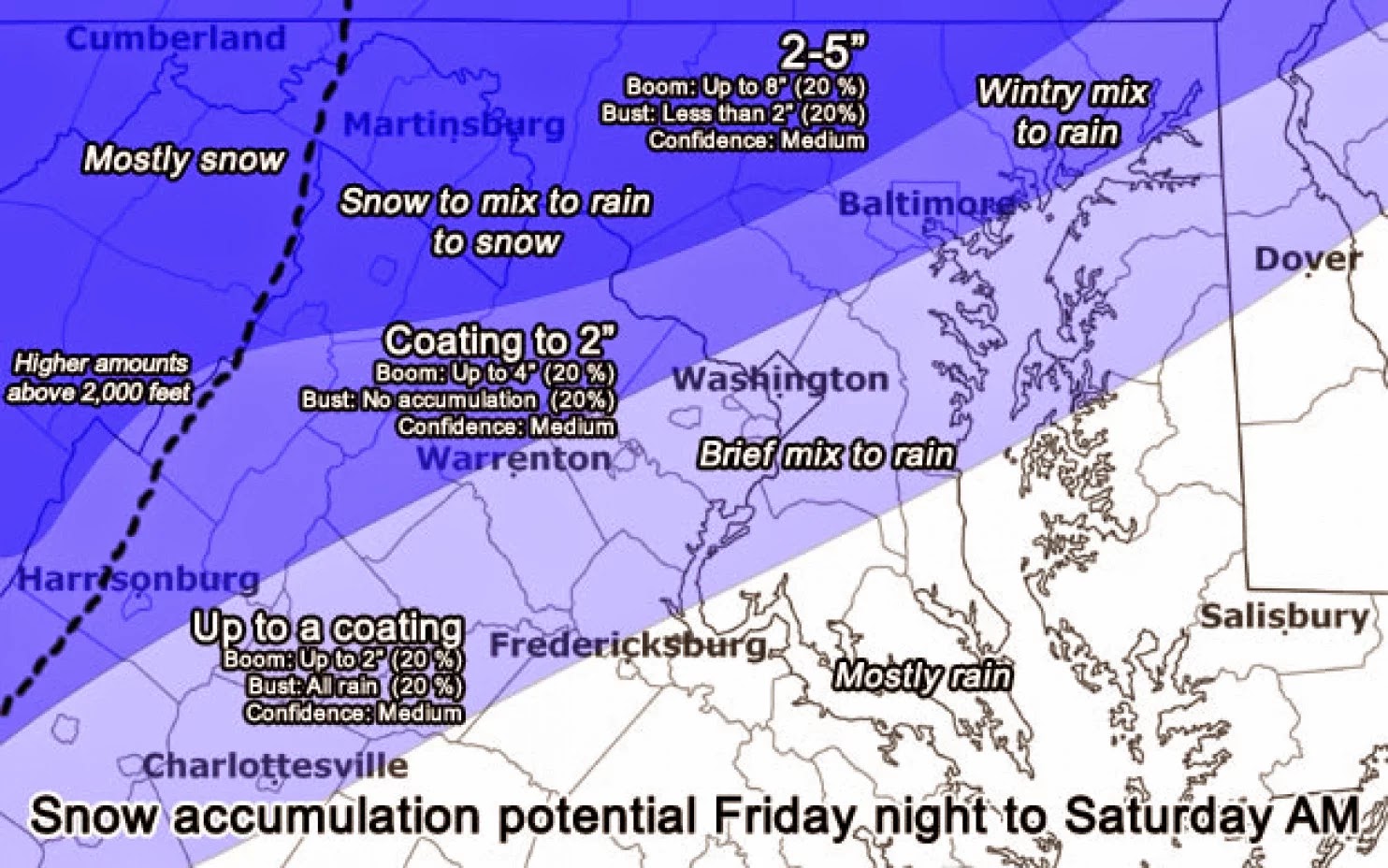This past week’s winter storm came
in two parts. First, an Alberta Clipper
struck the mid Atlantic region with a coastal low-pressure system following
right behind it. You may have heard the term Alberta Clipper multiple times
this past winter season, but what exactly is an Alberta Clipper?
 |
| Courtesy of WDBJ.com |
An Alberta Clipper hails its name
from the northwest Canadian province of Alberta due to its formation over the region. Although it often originates from Alberta, it can sometimes also form around the nearby Canadian provinces of Saskatchewan and Manitoba and even as far south as Montana. The Clipper part of the name comes from the fast moving clipper sailing ships of the late 19th century. Therefore, the Alberta Clipper is a rapidly
moving low-pressure system that often brings winter storms to the U.S. The system forms on the east side of the
Canadian Rockies mountain range after warm, moist air from the Pacific Ocean
moves over the mountains. Although, Alberta Clippers can bring snow to the regions
it travels over, it’s a different scenario directly on the east side (leeward)
of the Rockies. Alberta repeatedly experiences Chinook winds. Chinook,
“snow-eater”, winds are warmed from the Pacific Ocean and can melt up to one
foot of snow. After the Alberta Clippers’ formation, it gets caught in the jet
stream and moves from the west-northwest direction to the east-southeast. In
the winter months the jet stream dips further south down into the U.S. Thus,
this is a primary reason why we often see more of these storms because they
make their way through the Great Plains into the Mid-West and finally arrive in
the mid-Atlantic region. After it moves through the mid-Atlantic region it
exits land and moves over the Atlantic Ocean, but sometimes it can hook up to
the north and intensifies again over New York, New Jersey, Pennsylvania and New
England; it can drop significant amounts of snow over the New England states. Other times, its route can take it over the
Great Lakes region and can produce enhanced lake-effect snow for the Ohio River
Valley region.
 |
| Courtesy of AccuWeather.com |
Just like last week’s storm, these
systems usually bring anywhere between one to three inches of snow due to their
fast moving pace. The quicker speed of a clipper inhibits moisture development
and the system cannot hold as much vapor. Accompanying these storms are gusty
winds and frigid temperatures. Wind chill temperatures can dramatically drop
into the mid -30 degrees Fahrenheit. A daunting task to meteorologists is
forecasting snowfall totals with these systems because of snow bursts. Stronger
bursts of snow frequently intensify over regions and can dramatically increase
snowfall totals over a localized area.











